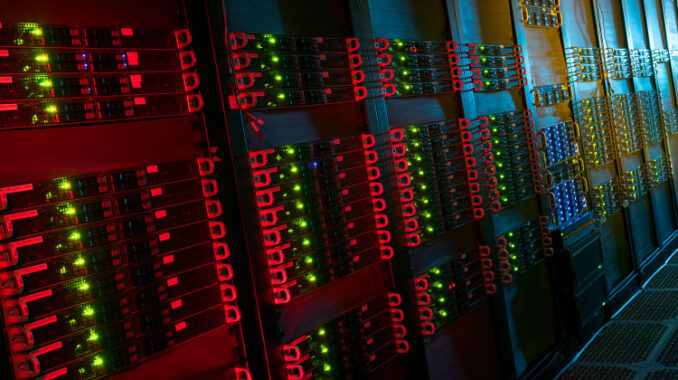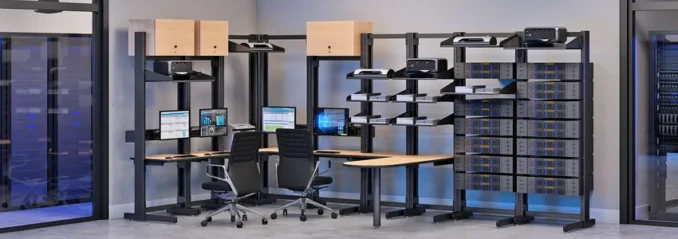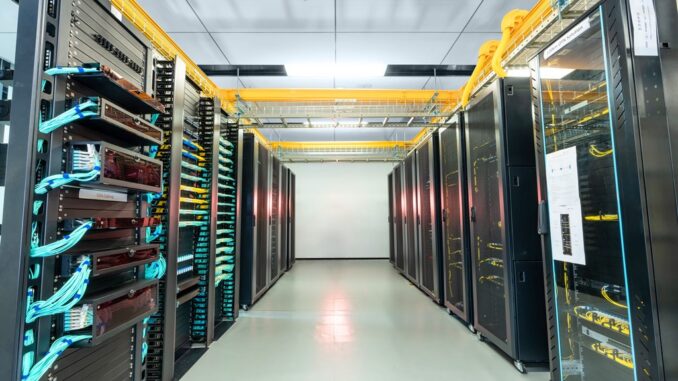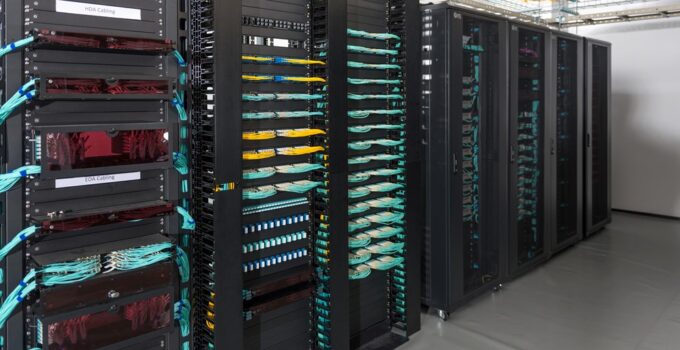Server rooms and data centers are specialized premises for storing network equipment arranged in large systems. Depending on the scale, systems can total several hundred or thousand components. Thus, network systems require a lot of place. Server racks are designed to help cope with this task. They provide an opportunity for multi-layer storage, compact accommodation of computing hardware, and improved room ergonomics.
What are Server Racks?

Source: patchbox.com
Server racks are one of two commonly used furniture pieces for data centers. These are open-frame metal constructions that consist of 2 or 4 vertical posts. Uprights have tech holes for fastening equipment. Racks can be installed on floors or fastened on walls.
Benefits of Rack Models
This type of server furniture is beneficial due to the following trumps:
- Easy access to all devices. Easy maintenance is achieved since access is not hindered by sidewalls or doors.
- Perfect air circulation. Natural airflow freely passes through equipment and cools it.
- Multi-level hardware allocation allows for saving space and provides secure storage.
- Easy cable routing since nothing hinders access to devices.
- Low cost if compared to enclosed cabinets for which more material is used.
Open-frame furniture improves performance in data centers and simplifies system administrators’ duties. However, it is important to know how to select the best network rack.
Types of Server Racks

Source:pinterest.com
There are several classifications of open-frame models.
Taking into account the type of body, they distinguish between 2- and 4-post models. The first type is designed for less numerous systems and allows carrying fewer equipment items. The second kind is bigger and allows accommodating more devices. Also, note that its depth is regulated due to an adjustable body construction. Rear posts can slide to fit servers.
If we consider furniture pieces according to the installation, products fall into floor-standing and wall-mount models. The first group is usually more spacious and can withstand higher loads, while the carrying capacity of wall-mount models is limited. The latter is suitable for compact systems and installation in small premises (offices) or at home. A two-post rack server mount is carried out using special high-load dowels.
Sizes of Server Racks
When selecting a suitable model, system administrators consider three dimensions, namely, depth, width, and height.
Depth can be adjusted due to a flexible body design. The rear side of the rack can slide varying the depth. To calculate the required depth, you should measure the equipment to be placed inside and leave extra inches for air circulation and cable wiring.
Width is usually standardized to fit most IT equipment. The most popular option is a 19-inch rack. This width allows fastening most kinds of active hardware.
Height is the most complicated dimension. It is measured in units (U), with 1U being 1,75 inches. To find out the height of the best server rack, system administrators usually create layouts. Thus, they visually see how hardware is accommodated. Measure the height of all devices, leaving free space, and calculate the needed rack size. The range of available models differs greatly from compact wall-mount products of 2U-6U to huge floor-standing items of up to 36U and 48U.
TOP Accessories for Server Furniture

Source: afcindustries.com
System administrators frequently use additional accessories and tools to improve rack functionality, ergonomics, and comfort of use. The following attachments are more common:
- lockable drawers. Such drawers are usually placed on the bottom of the rack and used for storing maintenance tools and supplementary parts.
- If you need to place some equipment inside the rack, shelves are mounted on posts. The thing is those vertical uprights are not actually connected by any horizontal surfaces. Thus, shelves are used to add more space for equipment accommodation.
- power rails. These are special designs that allow shelves to slide, which simplifies maintenance and makes devices easier accessible.
- cable management tools. Here, boxes, ties, hooks, and rings are used to arrange dozens or hundreds of wires in bunches and avoid tangling.
- patch panels. These are sets of connectors that allow switching on different types of devices and interconnecting them with each other.
These tools are designed to make furniture pieces more functional. System administrators frequently apply most of them. Modern producers offer more options, so you can find any accessory you need.
Overall Tips on Choosing the Best Server Rack

Source: medium.com
If you plan to organize a network system and need furniture, make sure to study this server rack buying guide to avoid mistakes:
- Select an appropriate size. First of all, you should clearly understand how many devices will be placed and how they will be allocated to determine the correct size. 3D layouts help visualize the allocation of hardware in your future rack and simplify measuring. In this case, you’ll easily calculate the required furniture size.
- Select an appropriate model. Depending on the place and type of installation and the number of devices, use an optimal solution. For example, the best server cabinets are used for mounting in public places to protect devices from unauthorized access. Open-frame models are preferable for closed premises to let the air freely pass through devices and provide sufficient cooling. Wall or floor models are chosen, based on the weight of equipment to be stored.
- Consider a cooling strategy. This is one of the vital factors for any network system. IT devices emit too much heat during operation. Insufficient cooling inevitably leads to overheating. Thus, make sure to choose a proper cooling strategy. Here, system administrators recommend considering the next tips:
- place devices loosely to allow the air to circulate through components freely;
- consider hot and cold air aisles;
- leave extra space from the rear and front sides of the rack;
- add fans or HVAC systems if natural cooling is not enough.
It is important to create an optimal environment in data centers to ensure hardware durability and smooth performance without malfunctions. Moreover, constant airflow will not let dust settle on equipment.
- Choose accessories. If you need, buy additional accessories to improve the convenience of use and maintenance.
Network systems are indispensable elements of any infrastructure. Data centers stand behind any office and company. Thus, the issue of proper space allocation is crucial. Server racks are widely used to house hardware and create optimal conditions for system performance. Modern manufacturers offer a wide line of models to any demand and size. But, before you buy a server furniture piece, make sure to select the best model. For this, consider size, cooling, the number of devices, and the place of installation.





